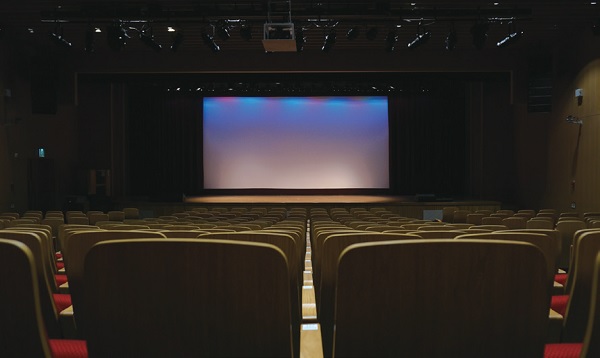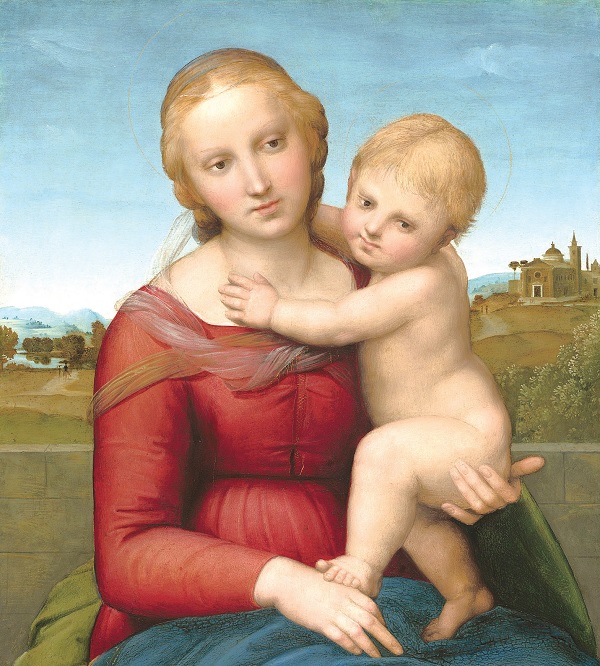Do you see language beyond the image?
【Image Interpretation】Series 4

Although the interpretation of the image seems to be obvious at a glance.
However, there are several factors that will affect the viewer's interpretation of the image, and these factors are all languages external to the image. If not mastered, the interpretation of the image will be biased.
Language beyond the image includes: the way of display; the cultural, historical and social context; and the viewer’s interpretation.

▲The way and carrier of image presentation often affects the viewer’s interpretation of the image. Does watching a movie in your living room or in a movie theater bring out different feelings?
How the image is displayed
I wonder if you have noticed that the way and carrier of image presentation often affect our value views and expectations for images.
For example, if an image appears in a living room, a movie theater, or a modern gallery, will it induce different ways of viewing?
These three places have different technologies and compositions, bringing out different atmospheres and emotions of appreciation. Just like a gallery, they don't sell popcorn and no food is allowed inside. We will appreciate it more solemnly and quietly.
When people watch TV series online, they are less likely to follow them with contemplation or respectful appreciation. Viewers have different ways of relating to the image in these three places, and will have different reactions.
Likewise, a photo will be interpreted and trusted differently if it appears in an advertisement or movie than if it appears in a newspaper or newsreel. Many of these are because advertisements and movies are fictitious narrative images that are not produced at the time when real events occurred. Moreover, they are designed and then filmed, so they are difficult to be regarded as empirical evidence.
The meaning and value of artworks are more related to the location where they are placed. Whether a painting is placed in a church, a palace, or a museum will trigger different associations. A painting or sculpture of Jesus, if displayed in a church, invites meditation and prayer. What if it was placed in a museum? It will simply be appreciated as a work of art.
My family and I once traveled to Italy, and of course we especially went to Florence to see the statue of David. But the same museum also displays many cross paintings by different painters and different painting styles, interpreting various scenes of Jesus being hung on the cross or being lowered down.
While watching among the tourists, I only noticed the styles and interpretations of each painter. But after reading it for a while, I began to feel aesthetic fatigue, because there are so many works from different eras! What is most lacking is the emotion of sacred meditation. It can also be said that numerous paintings have deprived me of the religious emotional impact that a painting or sculpture can bring to me.
So viewing the image, the place of presentation will contribute to part of the interpretation of the image. Whether in a palace hall or a Hollywood studio; in an avant-garde art gallery, a living room, or even on the street, different display locations have their own rules of the game, regulating how specific viewers should see and react.
As for photos and videos taken with mobile phones, they can easily be uploaded to the Internet and viewed by millions of viewers. Playing it on different carriers will definitely give the images different meanings and interpretations.
Cultural, historical and social context
There are certain themes in culture that recur from ancient times to the present, such as "mother and son." From the image of the Virgin and Child, it gradually developed into a simple "mother and son", reflecting different cultural, historical and social backgrounds.


▲The recurring themes in the paintings are still influenced by the artist's cultural, historical, and social background, which affects the way they are presented. For example, Raphael's "Madonna and Child" (1) and José van Cleef's "Madonna and Child" (2) present different national backgrounds.
For example, the "Virgin and Child" painted by the Italian painter Raphael and the "Virgin and Child" painted by the Dutch painter Joos van Cleve, the painting style of the two paintings not only presents It shows different national backgrounds and also shows the cultural background of women and Europe in the 16th century.
From the painting, we can see that the women of that era had relatively plump bodies. Raphael's Madonna appears in front of the Italian landscape, and behind Van Cleef's Madonna is the distant landscape of Holland. The two paintings clearly present the painter's cultural, geographical and historical particularities.
Let’s look at “Migrant Mother” taken by Dorothea Lange during the immigration wave in California in the 1930s. This photo became a masterpiece of the Great Depression. The mother in the photo is completely different from the Virgin Mary. Instead of the smooth, innocent and detached mother in the 16th century painting, she has a weathered face and eyes filled with vicissitudes of life. His eyes betrayed desperation, but also perseverance.

▲"Immigrant Mother" photographed by Dorothy Lange became a masterpiece of the United States during the Great Depression.
The three mothers looked in different directions. The first two are looking at the near future, where they are now; the immigrant mother is looking at the distance, the future - the future for herself and her children. There is a certain amount of worry and despair in it, and it lacks the tranquility and calmness found in early portraits of mother and child.
The meaning of these images can be summarized through the viewer’s understanding of the background of the images and the historical time and space. Interpreting images requires understanding the background of the times, as well as the relationship between the surrounding images in the past and present on the same theme.

▲Can passers-by in a hurry catch any image language among the many colorful and flashing advertisements in Times Square in New York?
How do viewers assign meaning to images?
All creators have their original meaning and hope viewers can receive it. So advertisers study audiences, and filmmakers create images that audiences interpret in specific ways. When an architect designs a house, he also attempts to allow people to use the built space in the way he designed it.
However, the creator's intention may not necessarily be the meaning that viewers will get.
Because viewers have their own viewing experience and association background, it basically surpasses the imagination of the creator. Many times, the viewer's perspective may deviate from the creator's original intention. For example, when a creator is creating, he is creating in an environment with his own images as the main body. But where the image is displayed and what furnishings are next to it will bring different viewing experiences to viewers.
The painter creates a painting and focuses solely on it, but the viewer may see the painting in a gallery among many other paintings. Or an ad appears among the many colorful and flashing advertisements in Times Square in New York City. People walking in a hurry pass by, and with a casual glance, it is difficult to say what image language is captured. Or upload the video to YouTube and it will be linked to other videos immediately. It’s hard to say whether viewers will be affected by the other videos listed next to this video.
The viewer's perspective will be affected by the channel on which the image is displayed. A variety of channels will definitely affect how to interpret the meaning of image presentation.
這就是視覺文化學者尼可拉斯‧米左弗(Nicholas Mirzoeff)所提出的「視覺互涉性」(Intervisuality)。不同視覺模式的交互影響,是視覺文化的關鍵面向之一。因此,任何觀看經驗都可能和不同的媒體形式、基礎設施和意義網絡,以及互文性的意義(intertextual meanings)融為一體。 Note
In addition, the creator cannot grasp the age, gender and cultural background of all viewers, and the originally designed viewing effect may not meet expectations.
For example, many young viewers have watched the movie "Titanic" seven or ten times and cried every time. I have also heard that some people stood up angrily when they saw other viewers not crying and asked, "Why did you Don’t cry?” But I couldn’t cry while watching this movie, and I didn’t appreciate the leading actor. Because I was already middle-aged at that time, and this unreliable artist wanted to take me flying? Don't even think about it, I can't agree with it at all.
Therefore, viewers may create another interpretation of the image based on their own background and life experience. It may be completely different from the original intention of the creator, but it is equally important!
The next time you are touched by a painting, a photo, or a movie, you might as well think about: the way of display; the cultural, historical and social context; and the interpretation brought in by the viewer. Maybe you can see the "off-screen words".
Note: "The Subject of Visual Culture" in The Visual Culture Reader, 2nd ed., by Nicholas Mirzoeff, Routledge, New York, 2002.
Could it be, senior writer. He is currently the director of the "Genesis Literary Training Bookstore", specializing in promoting the literary and cultural vision for the Kingdom of God, cultivating and shepherding literary workers. His book "Throwing a Figure in Eternity" won the 2012 Tangqing Literary Award. Other essays have won Taiwan's "United Press Literary Prose Award" and "Liang Shiqiu Literary Award". The novel has won the "Bing Xin Literature Award" in mainland China and the "Religious Literature Award" in Taiwan. He is the author of the text ministry series "Your Story, Your Heritage", "The Influence of Heaven, God's Time", etc. My lifelong dream is to see the realization of "all people reading" and "all people writing" among Christians.
